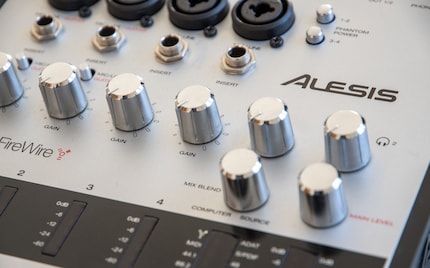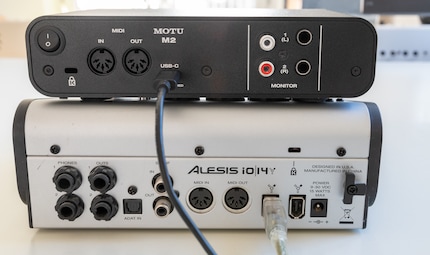

This audio interface is good – and needs to go
I’m not joking. This is truly a good device. But it’s had its day. Here’s an example of why we’re forced to throw out devices that are still fine.
The Alesis iO14 is a good device. It has an audio interface. A digital one even. And it works.
I wrote something similar about the very good monitor Asus VH228. But this time I’m being serious. To be honest, the Asus monitor is pretty awful once you’ve got used to today’s standards. I dropped it off at my nearest electronics store for disposal – ashes to ashes. May its rare earths rest in peace.
Back to the Alesis iO14. With an audio interface like the Alesis iO14, you can plug in microphones, electric guitars or other audio sources and record the sound on your computer – in much better quality and, most importantly, without any audible delay.

I’ve owned this device for a very long time. It was released in 2007. You’re probably assuming that it’s long since ceased to meet today’s standards. However, you’ll be surprised to hear that this device can record at a sampling rate of up to 192 kHz and has pretty much everything today’s amateur interfaces offer. From a recording quality and features point of view, I don’t see any reason to replace it.
Having said that, I recently replaced it with a device that has just two input channels instead of the four featured on the Alesis iO14.

No longer fit for use
The Alesis iO14 is practically unusable with today’s computer. There are two reasons for this. Obstacle number one: the drivers are outdated. The newest version for Windows is from 2010, the one for Mac from 2012. The drivers are written for Windows 7 and Mac OS 10.8, respectively. Although I somehow managed to run unsigned drivers under Windows 8 and Windows 10. But you have to expect problems if you use drivers this old. Working with a Mac system with M1 chip? Forget it.
Obstacle number two: this interface isn’t connected via USB as is common today, but via FireWire. Computers haven’t been equipped FireWire ports for a long time. What’s more, it was only standard on Macs, and that was many years ago.

FireWire can’t be converted to USB with an adapter. The two interfaces are incompatible. I installed a FireWire card especially for this device on my last desktop PC. Now I no longer have a tower PC anymore, and besides, this is just getting ridiculous.
Speaking of ridiculous: There is an adapter available for Thunderbolt. But I’m not about to buy an expensive adapter if the device drivers only work on an old system I don’t have. And did I mention that adapters are spawned in hell?
The Motu M2 has a higher life expectancy
Making up my mind was made easier by the fact that decent interfaces for hobby musicians are much cheaper today. And the best news? These kinds of problems will be a thing of the past with my new audio interface. USB has been around for over 20 years now with no end in sight. It’s a standard that’s not about to disappear. And as for the drivers: like most of today’s interfaces, the Motu M2 also runs with the operating system’s standard drivers. This makes it a bit slower than with the manufacturer’s own special drivers, but fast enough for recording with correct timing.
Rest in peace, Alesis iO14. Even though 15 years is an impressive age, letting it go still pains me a little. It’s a pity to get rid of a device that isn’t broken and has such a cool design.
My interest in IT and writing landed me in tech journalism early on (2000). I want to know how we can use technology without being used. Outside of the office, I’m a keen musician who makes up for lacking talent with excessive enthusiasm.
Interesting facts about products, behind-the-scenes looks at manufacturers and deep-dives on interesting people.
Show all

